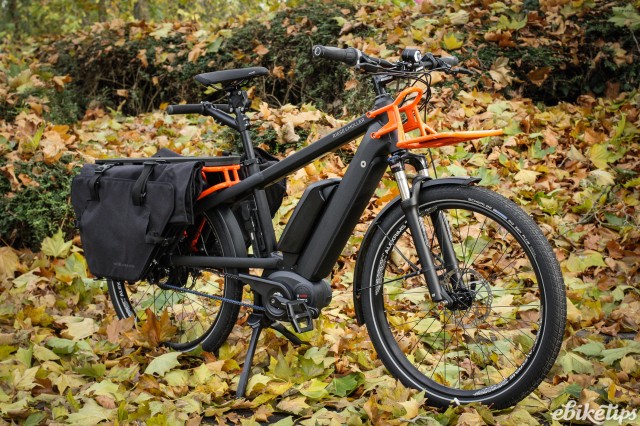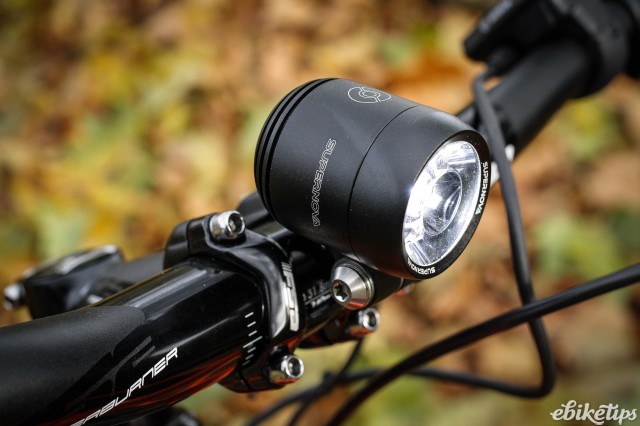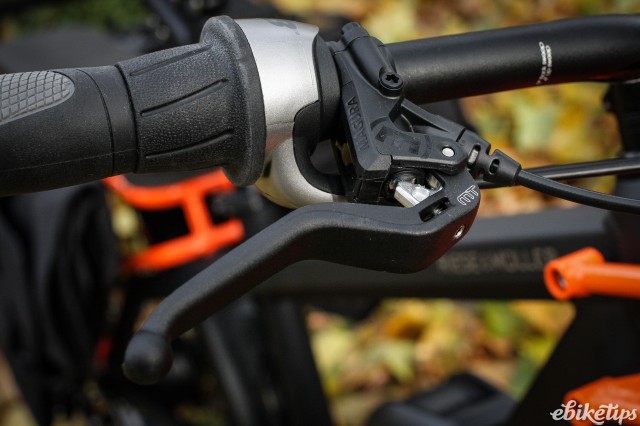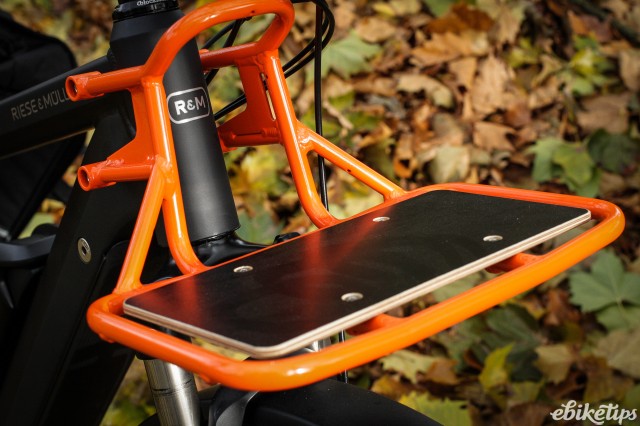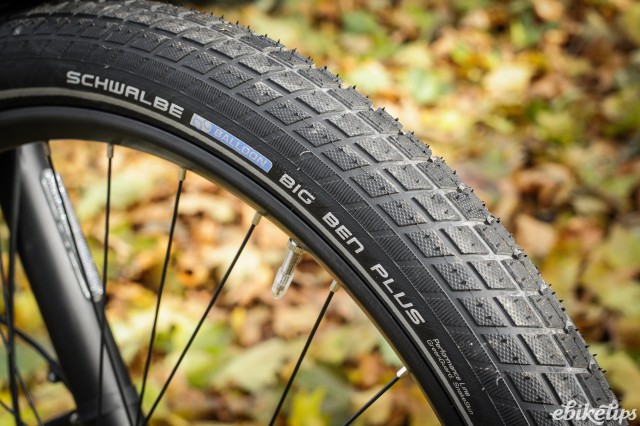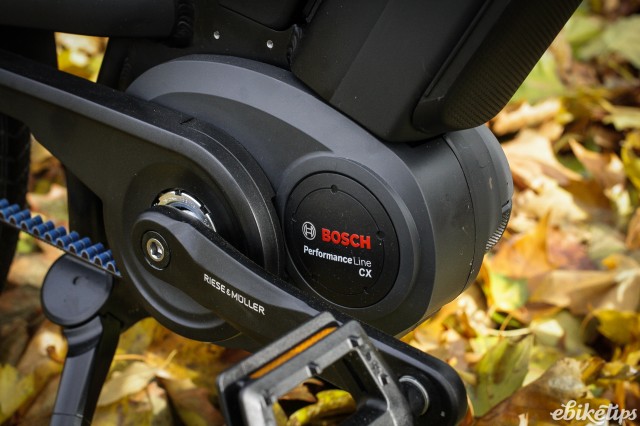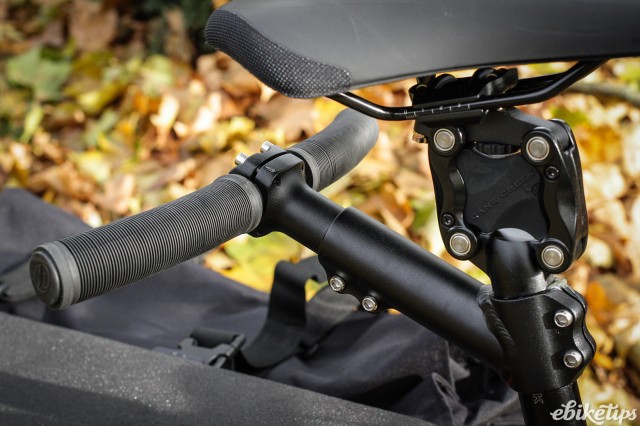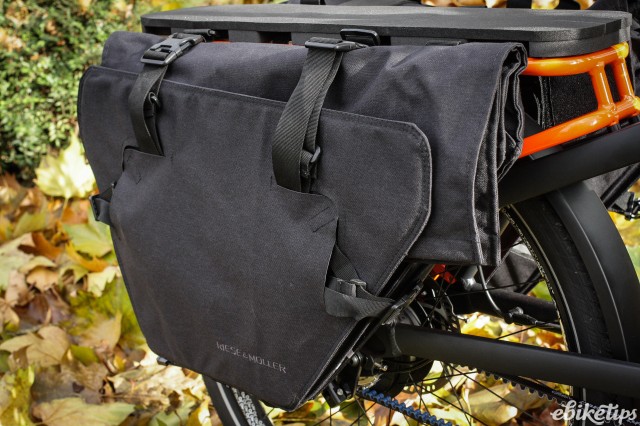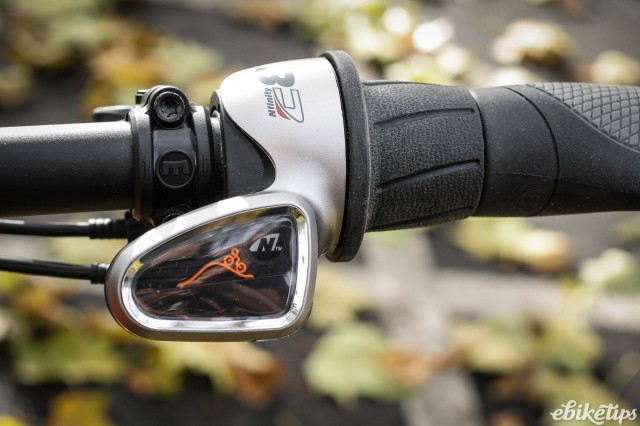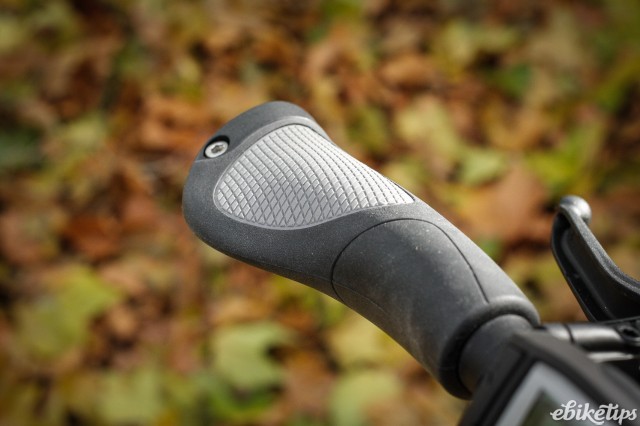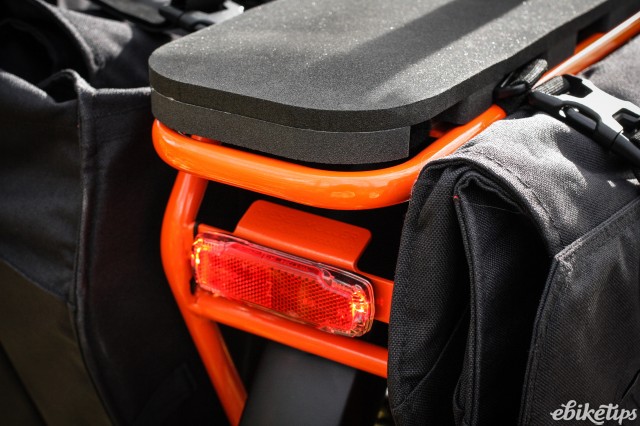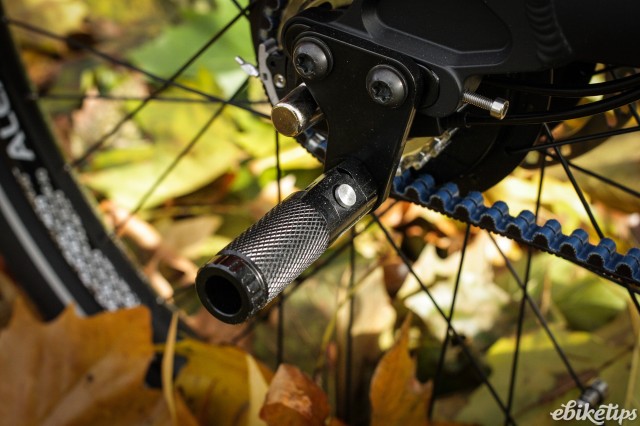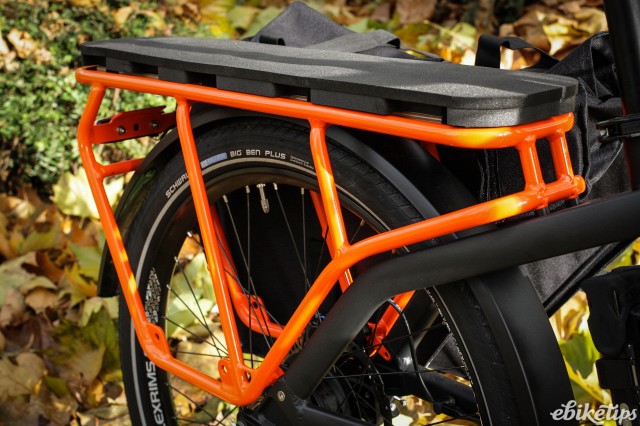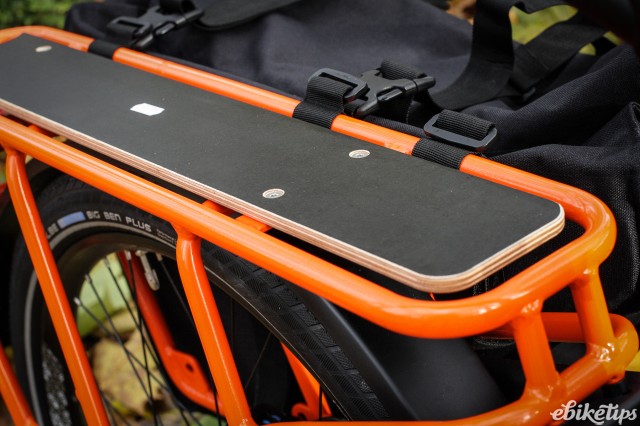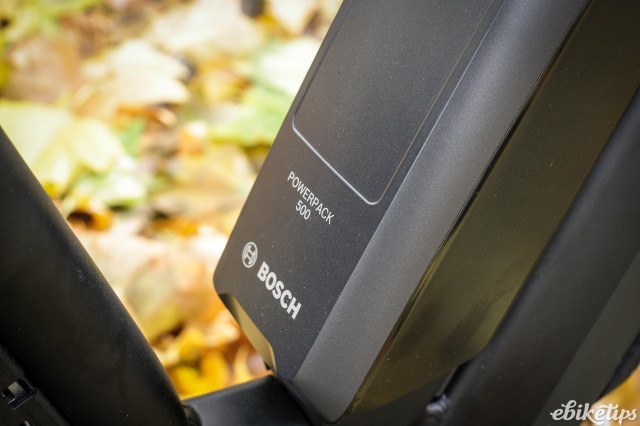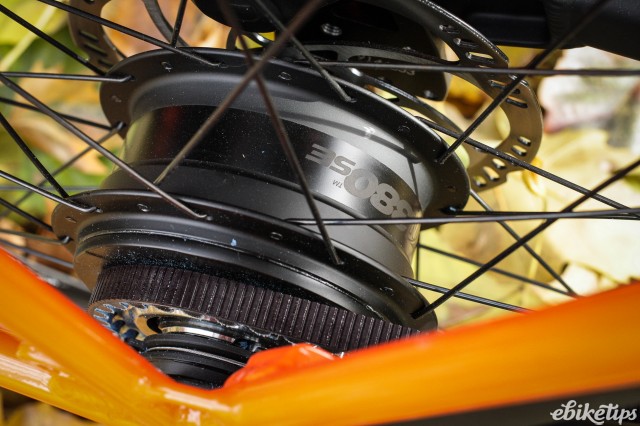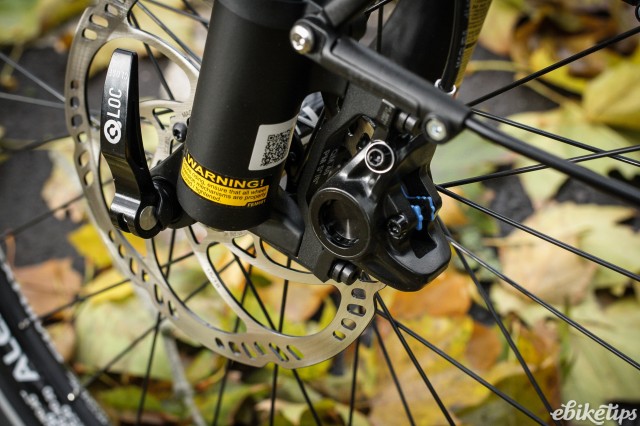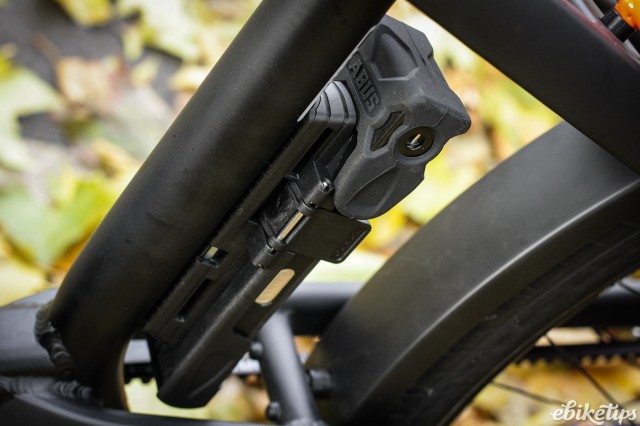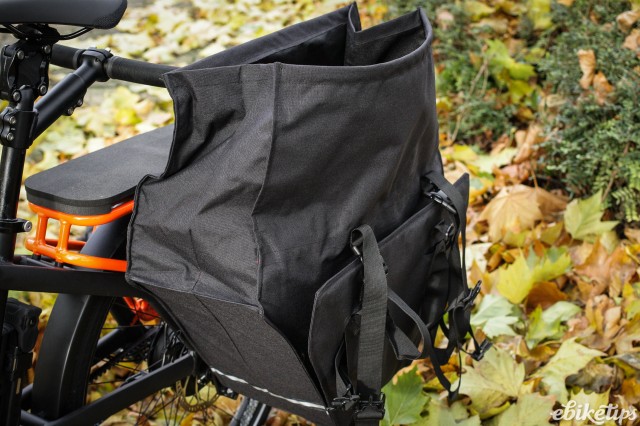Riese & Muller Multicharger Vario
Overview
- Very well built
- Top-notch equipment all over
- Nfinity hub is perfect for the bike
- Expensive
- Heavy
Riese and Muller’s Multicharger Vario is a brilliant everyday cargo bike. It’s compact enough to live where a normal bike would, and versatile enough that you can replace the majority of car journeys with it. It’s expensive, but not as expensive as running that second car… at least after the first couple of years.
Riese and Muller have had the do-anything Charger in their range for a number of years, and the Multicharger is an adaptation of that design, with the front end slightly shortened and the rear extended to give a cargo space behind the rider. Basically it’s a compact long-tail cargo bike. This bike isn’t as long as many similar bikes – for example the Kona Electric Ute we’ve also got on test right now – but it’s long enough that you get a platform at the back that’s big enough to carry some serious loads. And a variety of different loads, too.
Design: compact for a cargo bike and very practical
The compact long-tail will be a very practical solution for many people. There’s enough load capacity for nearly everything, but it’s not anywhere near as cumbersome as a long-john style cargo bike (with the load at the front) or a full-sized longtail. This Multicharger fitted just fine in my shed; the wheelbase is only about 20cm longer than a normal bike, and it’s no wider with the panniers folded or removed. It’s only available in one size, and it fitted me (1.89m) fine; I suspect smaller riders would struggle with both the size and the weight of this machine. Light it ain’t.
Our bike came loaded with both the optional panniers and the passenger kit. The panniers attach with Velcro straps, and they’re nicely designed. They have semi-rigid sides and they keep their shape well when loaded, but the side panels fold up neatly origami-style so that you can flatten them against the bike; there are straps to keep them stowed when not in use. The top closure is a roll-top, which means you can keep the rain out, but also means that you can overfill the panniers if you need to and have everything poking out of the top. They’re well-made and very versatile, capable of swallowing a shop for a family of four with no problems. The funny little porteur rack at the front is a bit small to be hugely useful, although you could lash your tent to it if you’re off on an adventure.
The passenger kit consists of a foam pad for the rear deck, a set of vestigial handlebars which fit to the seatpost, and a pair of footpegs. When all that’s fitted it’s easy to give someone a lift on the back; I’ve given my 13-year-old daughter plenty of lifts to school, and also given my colleague Matt (80kg) a lift back up the big hill to his house. Both passengers were very happy with the experience, reporting that the pad, though it looks basic, is nice and comfy. You can use the footpegs with the panniers still in place, although they work better if the bags are removed. If your passengers are a bit small to hang on by themselves, you could easily fit a child seat instead.
Gearing: clever system that’s perfect for e-bikes
For gearing the Multicharger uses Enviolo’s Nfinity hub system. If you’re not familiar with it, it’s similar in looks to a hub gear in that there’s a single sprocket and the shifting mechanism is inside the rear hub. Instead of having discrete gear ratios, though, the Nfinity uses a planetary drive that allows infinite variation between the low and high ratios, with a range of 380%, about the same as a good eight-speed hub gear.
The Nfinity is a brilliant system for e-bikes. You can change when you’re riding and when you’re at a standstill, and you can adjust the drive ratio as often and as much as you like. I found that I was adjusting the ratio more than I would if I was changing gears, as the hub allows much more subtle shifts of the drive ratio. It uses a bar-mounted twist shifter; there’s no gear numbers of course, so instead you get a little person on a hill in the indicator window. As the gear ratio gets lower, the hill gets steeper, and vice versa. It’s a lovely bit of design.
The Nfinity hub uses a viscous torque transfer fluid to move the power from the supply to the drive side, and because of this it’s less efficient than some other drive options. That’s an issue when you’re supplying all the effort yourself, less so when there’s a powerful motor doing most of the work. For a bike like this, the Nfinity hub is more or less ideal.
The motor in question is the Bosch Performance Line CX, which is the most powerful of Bosch’s offerings, pumping out 75Nm of torque. That means that most trips on the Multicharger are trivially easy, even when you’re carrying something big, like a fully grown passenger. My benchmark commute hill (1.5km at 5% with a 12% section) was no bother at all with an unloaded bike, as you might expect. But even with an 80kg passenger on the rear it was still very achievable, without really breaking a sweat, so there’s plenty of grunt in the motor to move some serious loads about.
You wouldn’t really want to go with anything less than the CX motor on a bike like this, that’s heavy and designed to carry lots of people and stuff. The motor feels right: the bike’s not over-powered, and once you get onto steeper gradients it’s not the quickest. But it never felt like it was in trouble of not getting to its destination.
The ride: composed and comfortable
Out on the road the Multicharger doesn’t really feel like a cargo bike: it’s not noticeably bigger than a normal city bike most of the time, and it fits through the same gaps, albeit with the proviso that the panniers, when full, need a bit more clearance, and the turning circle isn’t as compact. The comfort levels are excellent. Not only do you get a Suntour XCR32 Air 70mm suspension fork that’s actually good, but you also get a Cane Creek Thudbuster seatpost that offers a bit of give at the other end too. The Schwalbe Big Ben Plus tyres also add some cushioning, and give good grip on a range of surfaces, and the Ergon grips are easy on the hands.
After dark there’s a Supernova E3 light plumbed in at the front, which is more or less as good as things get e-bike-light-wise, and a B&M Toplight rack-mounted rear. There’s a fuss-free Gates CDX belt linking the motor and Nfinity hub, and Magura MT4 hydraulic disc brakes front and rear to haul the mighty bulk of the bike easily to a standstill. It’s all top-quality equipment, as befits a bike with this sort of price tag. In fact the only thing that feels a bit sub-par is the supplied ABUS Bordo Plus link lock, which feels just a bit mid-range to be protecting a bike this expensive. I slung my Abus City Chain X Plus in the pannier when venturing into town.
Range: huge with the double battery
Range from our test bike was prodigious, thanks in the main to the fact that it’s got both the standard internal battery and also the second, down-tube-mounted battery for a total capacity of 1,000Wh. This is a heavy bike, with a transmission that’s not the most efficient, so I wasn’t getting double the range of a lighter Bosch-powered bike with a single battery, but it was sufficient that there was never any range anxiety: you can use the Multicharger as your transport every day of the week and just charge it every weekend. Now that second battery is a tremendously expensive upgrade, and the bike looks neater with just the internal battery, so unless you really need the extra capacity – if you’re going to use the bike for work every day, or go adventuring on it into the wilderness, maybe – then you’re better off keeping the £800+ in your pocket. Realistically the bike in the 500Wh configuration will have enough range for most people’s day-to-day use.
Overall: top dollar for a top performer
If you’re spending over four grand on a bike – over five grand in the configuration we have here – then you want it to perform more or less perfectly in more or less every way. If you’re looking for a genuine do-anything bike, the the Multicharger is certainly that. You can commute on it, you can do the weekly shop on it, give the kids lifts to school, take stuff to the dump, go on a bikepacking adventure… the list is a long one. Everything that the bike is specced with feels like the right tool for the job, and it’s a joy to ride. It doesn’t really put a foot wrong. Okay it’s heavy, and the CX motor doesn’t give the kind of punchy power that you get from a derailleur drivetrain and a bike that’s 10kg lighter, but it’s the nature of the beast: this is a bike that’s designed to take on pretty much anything. It’s a lovely thing to use and to ride, and I can highly recommend it. If the price tag is too salty then there’s a 10-speed Shimano Deore version for a fair bit less, but the Nfinity hub really is a wonderful thing, and perfect for a bike like this, so it’s worth the extra. The £839 second battery probably isn’t, unless you’re really going to be stacking up the miles.
There’s no getting away from the fact that this is a very expensive bike, but if you bought it and used it every day, and by buying it were able to give up a second car – or even go car free – it would pay for itself in a couple of years. And it really can take on most of the journeys a car can, especially in the city.
1 comments
Thanks for this, I have been looking for 'bike sized/hybrid bike-shaped Cargo bike for a while (to get round access/space issues at home) and have now bought a Multicharger.
I went for the Mixte Light version, valuing the ease of step through mounting, the more upright riding position afforded by the longer head tube and shorter/inclined stem, and the lighter/more efficient/wider range 10spd derailleur gear setup.
Its great, rides like a normal (fast) hybrid, but very stable when loaded, and runs well with lower assistance levels or none, so helping with range.
Recommended.
Richard Attwood. Sheffield.
